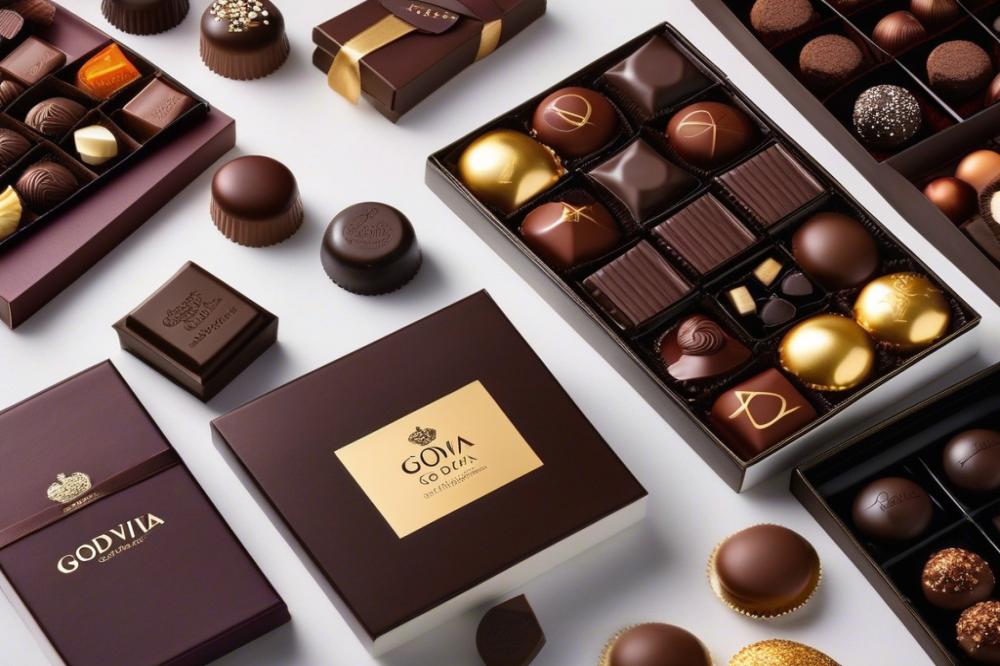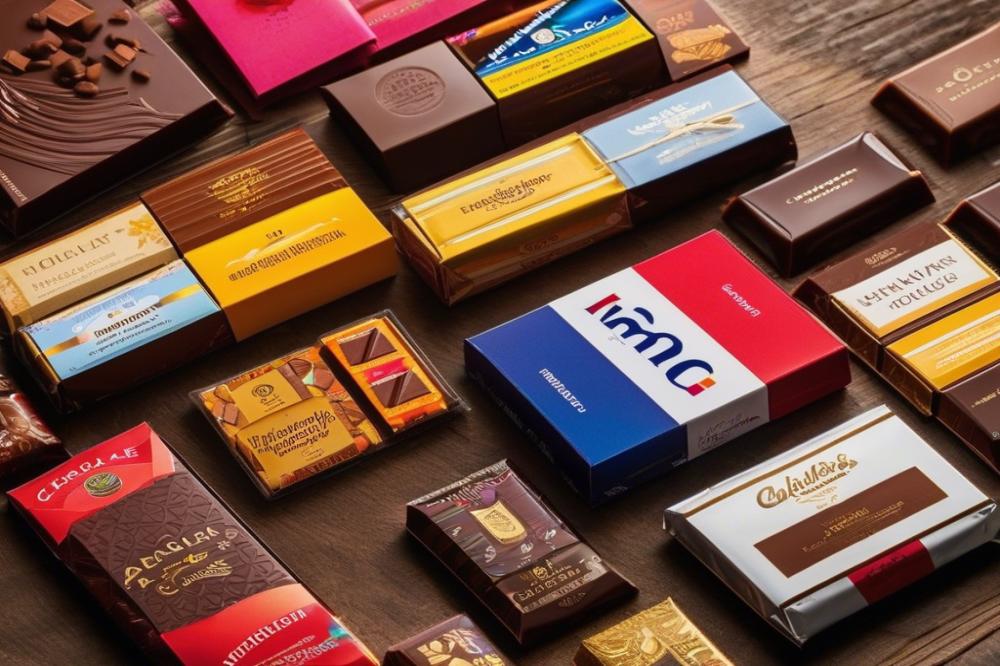Introduction
In the UK, some snacks capture the heart of both young and old, and Jaffa Cakes are a prime example of this. Loved by many, these little delights combine a sponge base with a layer of orange-flavored jam and a smooth chocolate coating. They are often seen on tea tables and in lunch boxes, making them a staple of British confectionery. However, their popularity goes beyond just taste; it raises important questions regarding how we classify food.
Food classification is vital in the world of sweets. Many people have strong views on what constitutes a dessert or a snack. Jaffa Cakes ignite particular interest because they blur the lines between cake and biscuit categories. This ambiguity leads to lively discussion about what they really are. Are they cakes or biscuits? The answer is not as simple as it seems.
This biscuit vs cake debate has garnered considerable attention over the years. The legal definition of these treats even played a role in court decisions. A famous case involved the manufacturer, McVitie’s, which argued that its product should be classified as a cake for tax purposes. On one hand, the cake structure suggests a soft, spongy texture typical of cakes. On the other, the biscuit texture is more firm, placing them in the snack category.
Ultimately, the discussion surrounding Jaffa Cakes serves as a fascinating microcosm of the larger conversation about how we define what we eat. While some enjoy them with afternoon tea, others prefer them as a casual snack. Regardless of where one stands in the debate, Jaffa Cakes continue to hold a special place in the hearts of many, enriching the landscape of British treats.
The Origins of Jaffa Cakes

History of Jaffa Cakes and McVitie’s
In the early 1920s, a small but significant product emerged in the UK. McVitie’s, a well-known name in the world of confectionery, introduced Jaffa Cakes. They were designed to be a new kind of snack, tapping into the growing market for convenience foods. These treats were inspired by a traditional recipe for a soft cake topped with sweet orange jelly. Despite their popularity, they sparked a great deal of confusion about their true nature.
Inspiration from Traditional Cakes and Biscuits
The design reflects characteristics of both cakes and biscuits. With a soft sponge base, one might expect it to belong to the cake family. However, its crisp chocolate topping gives it a distinctive biscuit texture. This unique combination raises interesting questions about food classification. Are they a snack or something more elaborate like dessert? These features contribute to the ongoing biscuit versus cake debate.
Initial Marketing and Product Development
Marketing efforts were aimed at making Jaffa Cakes appealing to a wide range of consumers. They were positioned as light sweet treats for any time of day. Packaging emphasized convenience, making them perfect for lunchboxes and afternoon tea. McVitie’s also focused on price point to attract buyers. The controversy over their classification prompted even legal scrutiny. Eventually, a court ruling determined that they were cakes, not biscuits, because of their cake structure. This decision added fuel to the long-running debate. Consumers still grapple with their identity, enjoying them as both snacks and desserts.
The Legal Definition of Cakes and Biscuits

The distinction between cakes and biscuits hinges on legal definitions that can seem confusing. In the world of food classification, the UK court case from 1991 is particularly significant. The case in question involved McVitie’s and how they should categorize their Jaffa Cakes. This moment in legal history became a pivotal point in the ongoing debate regarding whether these treats should be seen as a biscuit or a cake.
During the court proceedings, judges examined the structure of the product closely. Cakes, by definition, rise when baked and are soft. Biscuits, in contrast, tend to be dry and crisp. Ultimately, the court ruled in favor of McVitie’s, determining that the Jaffa Cake had a cake structure rather than a biscuit texture. This classification didn’t just settle the matter for McVitie’s; it also had ripple effects across the confectionery industry, influencing how other products are categorized.
Tax implications play a crucial role in this debate. Cakes are considered exempt from value-added tax (VAT), whereas biscuits are not. This discrepancy stems from the legal definition outlined in the earlier mentioned court case. Manufacturers must tread carefully, as a misclassification could lead to significant financial consequences. Not only does this tax issue affect manufacturers, but it also impacts consumers, who may find themselves paying more for a snack due to a simple label.
Legal classification, therefore, shapes perceptions surrounding these treats. Many consumers enjoy the delightful flavors of a Jaffa Cake, yet the debate still lingers in their minds. The idea of biting into a cake can evoke images of dessert, while a biscuit might remind one of a snack with coffee. This dual identity complicates how people think about it, demonstrating how a legal definition ripples out into broader cultural understandings. In the end, this complexity adds to the charm and controversy of the Jaffa Cake, making it an ideal centerpiece for discussions on food classification.
Cake Structure vs Biscuit Texture

The debate surrounding whether Jaffa Cakes are cakes or biscuits primarily hinges on their ingredients and structure. McVitie’s created this confectionery using a sponge cake base, which provides a certain lightness and moistness. Cake structure typically involves a leavened mix that rises during baking, giving it that characteristic airy feel. A biscuit, on the other hand, achieves its firmness from a denser formulation, which often relies on baking soda or other chemical leaveners.
In contrast to traditional cakes, the texture of these snacks is intriguing. Cakes are generally soft with a springy texture, while biscuits are crunchy and crisp. Jaffa Cakes bridge the gap between these categories, as they present a unique textural blend—a cake-like center topped with chocolate and a zest of jam. This amalgamation creates a sensation unlike either group individually, raising questions about food classification.
When examining conventional biscuits, one notes their dry attributes. They usually crumble easily and are often enjoyed with a cup of tea. However, the moist center of these delights contradicts the definition of a biscuit. In the UK, the legal definition could further complicate matters. Cakes are typically VAT-exempt, while biscuits are not, giving rise to interesting implications in the world of taxation and culinary jurisprudence.
Texture plays a crucial role in how we define our snacks and desserts. Whether crispy or fluffy, it influences everything from taste to eating experience. Even the presentation differs between cakes and biscuits. Cakes often become the centerpiece of celebrations, while biscuits serve as quick treats. Understanding these differences helps clarify why this debate continues to spark conversations among food enthusiasts across the nation.
Cultural Impact and the Global Snack Debate
In the world of confectionery, few treats ignite as much discussion as Jaffa Cakes. These delightful snacks have created a stir in food classification debates, particularly regarding whether they fall into the cake or biscuit category. This question has become notable not just in the UK, where McVitie’s produces them, but across the globe as well.
Different cultures are home to snacks that provoke similar discussions. Take the Italian biscotti, for example. Despite its name, it is a twice-baked cookie that some might liken to a cake because of its dense structure. Meanwhile, who can forget the Mexican churros? These fried pastries are often enjoyed with chocolate sauce, straddling the line between dessert and snack.
Variations exist everywhere you look. In Scotland, the beloved millionaire’s shortbread, with its layers of shortbread, caramel, and chocolate, leaves many pondering its category. Each of these snacks contributes to the larger conversation about what defines a cookie, cake, or even dessert.
Jaffa Cakes have undeniably shaped snack culture within the UK. They stand as a prime example of how legal definitions can influence public perception. The famous court case in the 1990s determined that these treats are cake, a ruling that didn’t just impact taxes but also how people view them in everyday life. This legal backdrop adds another layer to the ongoing debate.
Globally, they have spurred discussions about similar hybrid snacks. Wouldn’t it be fun to compare these unique treats? As new markets embrace their own versions, the lines between cake and biscuit blur further. Snack enthusiasts around the world are intrigued by these conflicts in food classification.
The dialogue surrounding confectionery continues to evolve. As more people engage in these debates, the popularity of different snack varieties grows. Through conversations about Jaffa Cakes, we spark interest in what snacks mean across different cultures. The quest to classify them as cake or biscuit keeps on rolling.
Public Opinion and the Ongoing Debate
Consumer perceptions of Jaffa Cakes as a biscuit or cake
The question of whether Jaffa Cakes belong in the biscuit or cake category stirs strong feelings among fans. Many consumers see them as a snack ideal for tea time. Others argue they fit better as a dessert. Observers note that the confusion stems from their composition. While they have a cake structure, they also possess a biscuit texture. Legal definitions in the UK play a crucial role, as McVitie’s faced a court case over this very issue. The ruling declared them cakes, which only adds fuel to the ongoing debate.
Polls and surveys: What do people think?
Polls conducted over the years show a wide range of opinions. Some surveys suggest that the majority consider Jaffa Cakes biscuits. Still, a significant portion sees them as cakes. Social media is a hotbed for this discussion, drawing humor into the matter. Fun memes circulate, showcasing the playful intensity of this debate. Various polls reveal that people’s preferences can sometimes lean more towards taste than classification. Interestingly, age plays a role too. Younger consumers often identify them as snacks, while older generations may refer to them as desserts.
The humorous side of the biscuit vs cake debate
There’s a lightheartedness to the arguments surrounding food classification. Jokes about Jaffa Cakes being neither a biscuit nor a cake often pop up in conversations. Puns about how it “takes the cake” or “crumbles like a biscuit” create laughter. Some even create imaginary scenarios about what would happen if Jaffa Cakes were held to a “biscuit or cake” tribunal. These comedic takes highlight how this topic engages the public’s imagination. They show that regardless of opinions, people find joy in this culinary conundrum. Jaffa Cakes have become a symbol of playful debate, captivating fans across the UK in their delicious dilemma.
Final Thoughts on the Jaffa Cake Debate
The discussion around the Jaffa Cake has become quite intriguing. It’s not just about whether it’s a biscuit or cake; it touches on identity in the food industry. This beloved snack has ignited discussions that go beyond simple classification. People enjoy picking sides, and that engagement indicates a deep connection to food culture.
Understanding the reasons behind this debate reveals much about consumer experiences. This product embodies creativity in snacks and desserts, challenging traditional categories. Such classification blurs the lines and creates room for playful arguments. This back-and-forth promotes a deeper appreciation for the variety within the baking world.
Future trends will likely see continued consumer curiosity and brands may seize this opportunity. As tastes evolve, so, too, will dietary preferences. New flavors or combinations might rise to popularity, repeating this cycle of debate. It’s exciting to think about where innovation will take these snacks, and how they will adapt to changing markets.
Ultimately, the discussions surrounding this favorite treat keep it relevant. They draw attention to how much people care about what they eat. With each bite, there’s a story, a memory, and sometimes even a friendly argument. As long as people are invested in food, the conversation about whether it’s a biscuit or cake will endure.



